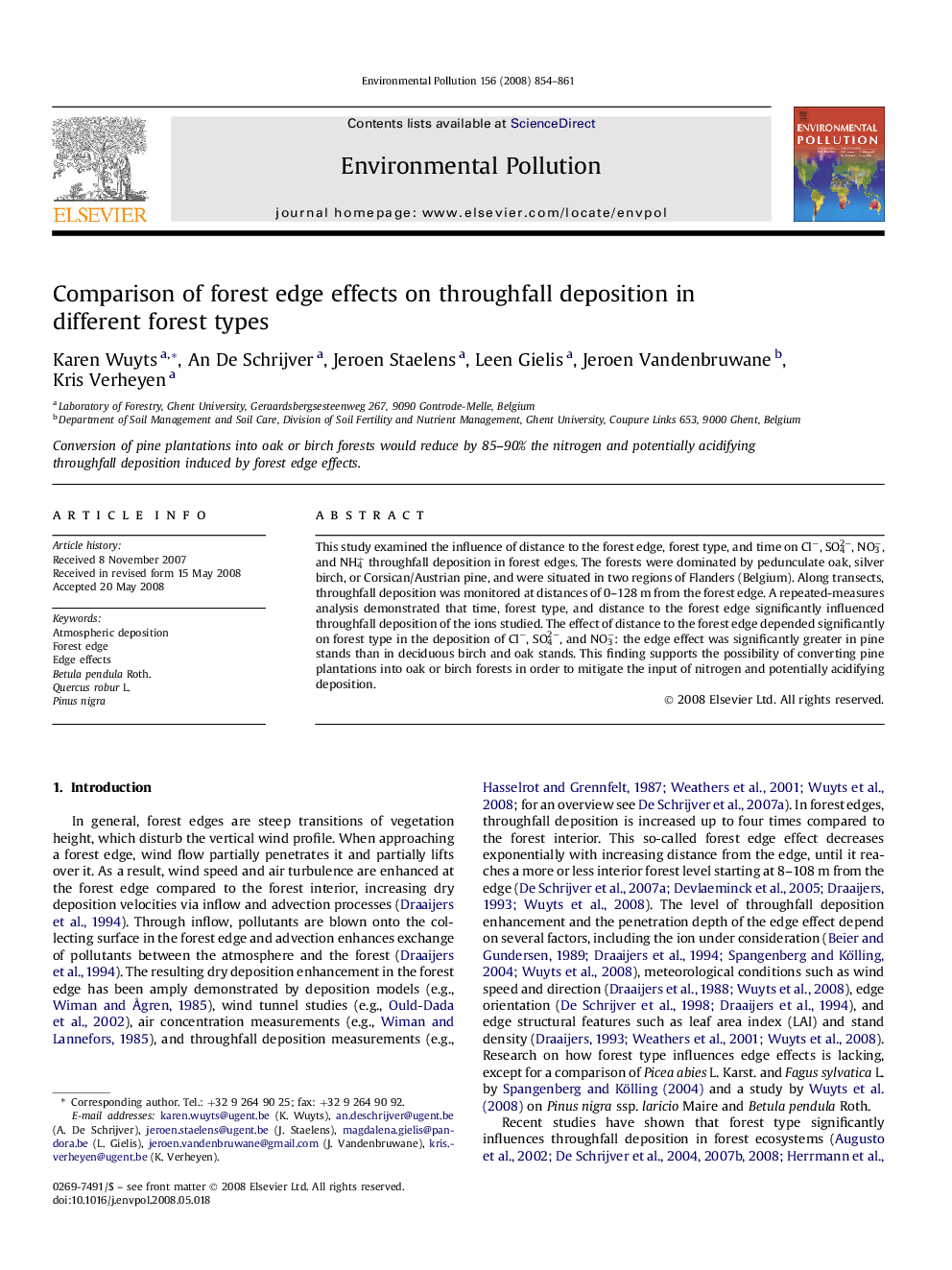| Article ID | Journal | Published Year | Pages | File Type |
|---|---|---|---|---|
| 4426221 | Environmental Pollution | 2008 | 8 Pages |
This study examined the influence of distance to the forest edge, forest type, and time on Cl−, SO42−, NO3−, and NH4+ throughfall deposition in forest edges. The forests were dominated by pedunculate oak, silver birch, or Corsican/Austrian pine, and were situated in two regions of Flanders (Belgium). Along transects, throughfall deposition was monitored at distances of 0–128 m from the forest edge. A repeated-measures analysis demonstrated that time, forest type, and distance to the forest edge significantly influenced throughfall deposition of the ions studied. The effect of distance to the forest edge depended significantly on forest type in the deposition of Cl−, SO42−, and NO3−: the edge effect was significantly greater in pine stands than in deciduous birch and oak stands. This finding supports the possibility of converting pine plantations into oak or birch forests in order to mitigate the input of nitrogen and potentially acidifying deposition.
